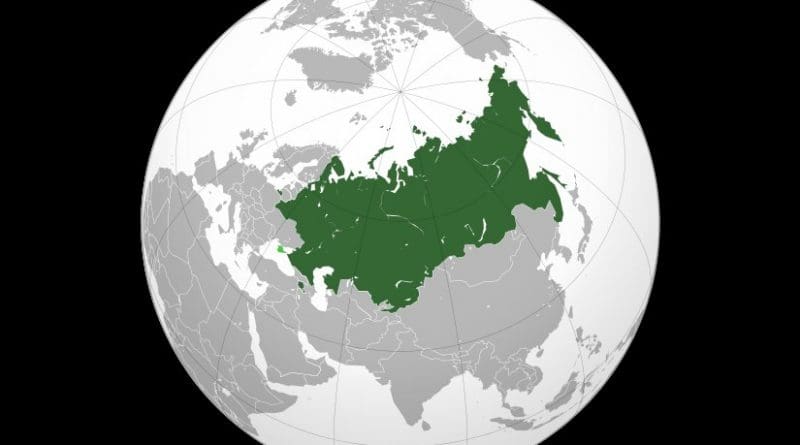Eurasian Union’s Common Currency: New Perspectives Or New Challenges – OpEd
Russian President Vladimir Putin’s proposal to create a single currency for the Eurasian Economic Union (EEU) has been one of the most discussed topics in the EEU area over the last decade.
The idea voiced by Putin at a meeting in Astana, Kazakhstan on Mar. 20, immediately found a lot of supporters and opponents, both in the EEU member countries, and far beyond it.
In fact, the initiative is not entirely new. The possibility of creating a monetary union and introducing a common currency was discussed back at the time when the EEU was undergoing the design stage.
In 2014, Kazakhstan’s President Nursultan Nazarbayev even suggested the name for the future currency – altyn. An alternative name – evraz – was also discussed.
However, there were no further initiatives following the proposals.
The creation of a single currency union will be difficult to achieve today, given the complex economic situation, the devaluation of currencies in all the EEU countries, the fall in prices of hydrocarbons that serve as main sources for income in Eurasia, the Western sanctions against Russia, and the tensions between the West and Russia as a whole.
The fact that the creation of a single currency union of Russia, Kazakhstan, Belarus, Armenia and Kyrgyzstan will take time, have already been voiced by the authorities of those countries.
In particular, Deputy Chairman of the National Bank of Belarus Sergei Kalechits said in a commentary for RIA Novosti news agency that it is too early to speak about a monetary union and a single currency within the Eurasian Union, and they will become possible only after the completion of formation of the common market, based on the principle of free movement of goods, services, capital and labor.
The Central bank of Armenia also said that it currently doesn’t have any plans and did not conduct any negotiations in order to move to a single union currency. The First Deputy Prime Minister of Russia Igor Shuvalov said Mar.28 that there is no need to hurry in the issue of creating a single currency union and one should carefully evaluate the pros and cons of such a move.
Also it is not clear what is meant by the term “monetary union”. It’s one thing if this alliance involves the transition to the national currency and the abandonment of the dollar and euro in mutual settlements. The use of foreign currency imposes certain additional obligations. It is enough to recall that a number of largest European banks, including French BNP Paribas, British Standard Chartered, Lloyds, Standard Chartered, Barclays, Dutch ING Bank and ABN Amro, the Swiss Credit Suisse, Scottish Royal Bank of Scotland, and many others had to pay multi-million dollar fines for non-observance of US laws and for cooperation with countries in respect of which the US imposed sanctions.
These banks were to follow the US laws because they used the US dollar in their calculations.
Transferring to their currencies in the calculations will allow the EU members not to depend on the legislation and attitudes of the third countries. This issue becomes more relevant amid today’s problems in the relations between the US and Russia. Moreover, the use of national currencies will help their promotion as reserve currencies in the region. Russia and Kazakhstan are striving for this. However, the country, offering its currency as a means of calculation, will have to guarantee its stability to implement these plans. No one will make the transactions in the currency, which is constantly under threat of devaluation even for strengthening good relations. They often say it is just business, nothing personal. The only question is whether Russia or Kazakhstan will maintain their currencies even in prejudice of their interests? And do these countries need this?
It is even more difficult if a rejection from the national currencies and the introduction of a new single currency for all EU countries are meant by “monetary union”. At present, the currency policy of the EU countries greatly differs. The free floating ruble is officially set in Russia. Belarus is trying to support the national currency using the currency control measures. As for Kazakhstan, despite the devaluation in February 2014, the country supports the stability of the tenge rate. The countries will have to create a single regime that will suit all of them.
Under the conditions of economic difficulties facing Russia, Kazakhstan, Belarus, Armenia and Kyrgyzstan which intends to enter the Eurasian Union in May, the full reformation of the financial system will only cause additional problems.
Moreover, taking into account the incomparable economic volume of the abovementioned countries, mainly Russia will have to assume the burden of providing the new currency. Accordingly, the new currency will strongly depend on Russia’s economic situation and this will make the other countries of the union more vulnerable.
Will Russia’s Eurasian partners want such economic dependence from it, especially, in the face of the sanction pressure of the West on this country?
Thus, in the current economic situation, the creation of the currency union and all the more so, introduction of a single currency in the Eurasian space is unlikely.
The implementation of such measures in the near future will have little to do with economic objectives, and can only be carried out for political reasons. However, with an eye to the future, this idea is quite attractive, and can open new prospects for the countries of the union.

